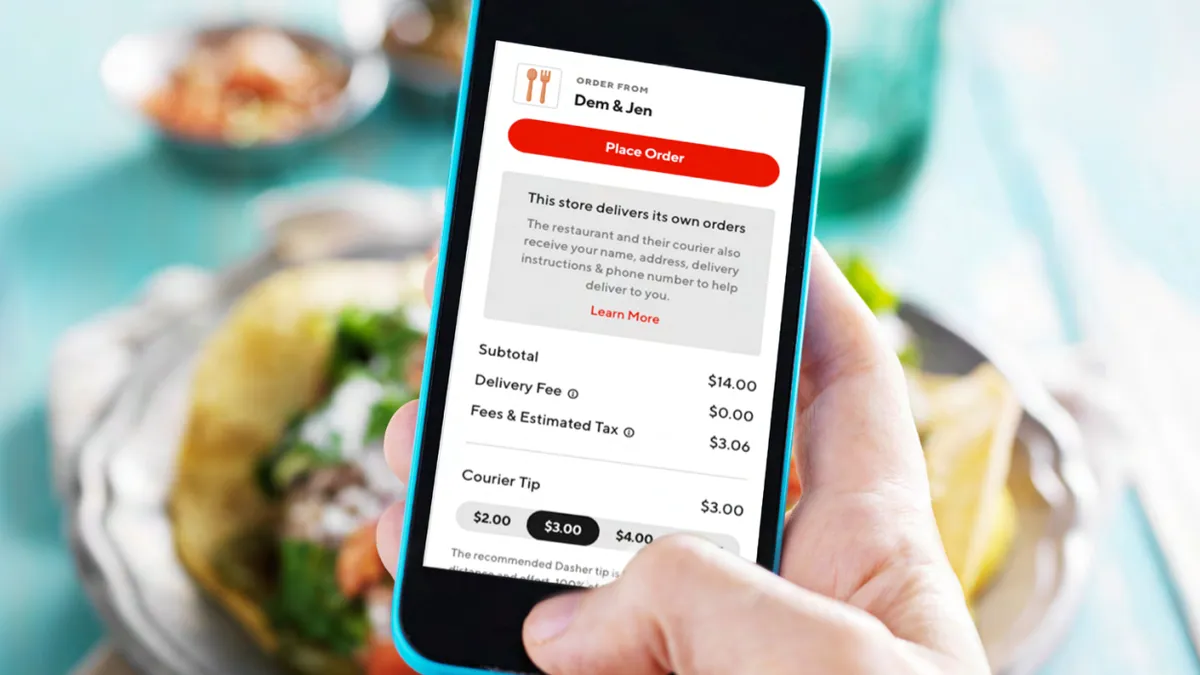Dive Brief:
- DoorDash has added a "flexible fulfillment" feature to its self-delivery product first introduced last year, enabling partner restaurants to use DoorDash driver or in-house delivery staff to complete DoorDash orders, according to a press release emailed to Restaurant Dive.
- Meanwhile, Grubhub has launched a new "supplemental delivery" feature, expanding self-delivery restaurants' delivery boundaries on its marketplace so such restaurants can access more customers using Grubhub drivers, according to a press release.
- Such flexibility allows operators to adjust staffing and operations based on immediate diner demand, which could provide help businesses juggling consumers returning to dine-in and triple-digit off-premise growth.
Dive Insight:
Both DoorDash and Grubhub said these new features are a response to their restaurant partners' requests as labor is one of the biggest challenges for operators right now. Hospitality workers quit their jobs in August at a rate of 6.8%, more than double the national average quit rate, while full-service restaurant concepts are working with 6.2 fewer employees than they were in 2019.
The low level of employment is affecting operating hours and delivery in some instances. Domino's Pizza cited the nationwide labor shortage as a driver of its first quarterly same-store sales decline in more than a decade, for example, and claimed it has affected its delivery business. Domino's has said it will stick to self-delivery.
Grubhub's driver fleet includes more than 100,000 drivers, while DoorDash has far greater market share, and a driver count of over 3 million as of Q3 2021. Those are valuable networks for operators to tap into when in-house staff is overwhelmed or unavailable.
In addition to flexible staffing, Grubhub's changes also add reach, which is difficult for operators busy with fulfilling orders on their own. Orders placed on Grubhub that are outside of restaurant's self-delivery boundary are sent to the partner's tablet and marked as being for pickup and delivery by a Grubhub driver. Its restaurant partners using the supplemental delivery feature have more than doubled their diner reach on the app, Grubhub said in a press release.
DoorDash's feature allows partners using a tablet to toggle between Dasher fulfillment and self-delivery in real-time. Restaurants can also set up which orders would make more sense to go to a staff member and which can go to a Dasher for a flat fulfillment fee.
Such flexibility is critical as delivery continues to grow, despite the challenged labor market. In a note to investors, Needham & Co. analysts wrote, "restaurant delivery is feeling increasingly sticky post-pandemic," and earnings reports have proven as much so far. Both features should allow operators to continue to meet that demand and more efficiently balance staffing while potentially growing their consumer base.
They could also deepen restaurants' dependence on third-party aggregators, and indicate an environment in which aggregators and operators co-exist with less friction. This is important for delivery companies as some concepts, like P.F. Chang's, explore self-delivery to save on costs.









